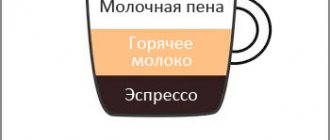Calcium is one of the most important microelements for our body. The strength of bones, teeth, nails, the beauty of hair, skin - everything depends on calcium. It regulates blood clotting processes and is needed for the absorption of other minerals and vitamins. We all know that a lot of calcium is found in dairy products - for example, in cottage cheese. But often we don’t think about the fact that there are foods that can inhibit the absorption of calcium or even begin to wash away the beneficial microelement from the body. She told us about the intricacies of calcium absorption and what negatively affects this absorption. Anna Ivashkevich, nutritionist, clinical psychologist-dietitian, member of the National Association of Clinical Nutrition:
Many microelements are important for the human body. Calcium is one of them. Most of it is found in bone tissue and tooth enamel. Calcium performs the following functions:
- participates in the process of blood clotting;
- regulates a variety of universal intracellular processes - muscle contraction, exocytosis, including the secretion of hormones and neurotransmitters;
- participates in the regulation of metabolism and functions of the endocrine system.
A lack of calcium can lead to disruption of the heart muscle, hypertensive crisis, seizures and other complications.
Dangerous couple. Calcium and vitamin D are useful, but... harmful? More details
Provides calcium
Dairy products must be present in the diet - they contain a large amount of calcium, even children know this. It is recommended to consume cottage cheese, fermented baked milk, and kefir at least once a day.
Next on our list are:
- cereals, including whole grain bread and buckwheat;
- legumes and peas;
- oranges;
- greenery;
- nuts;
- oatmeal;
- dried apricots, raisins and other dried fruits;
- persimmon;
- bananas;
- green tea.
You can check the level of calcium in the body in absolutely any clinic. This procedure is called a biochemical blood test for calcium.
It is advisable to eat foods containing calcium in the first half of the day, best in combination with vitamin D.
The importance of calcium for the body
Calcium is essential for the human body. With its help, many organs function and function properly. If the human body does not receive enough of this mineral, the functioning of many organs is disrupted and health deteriorates.
The body is provided with the necessary trace elements through special foods, as well as through medications. In the body, this useful mineral is mostly found in bone tissue.
This useful microelement is needed for the following processes:
- Normalization of stable functioning of the nervous system. Caffeine is a natural stimulant for normal blood circulation and also stimulates the nervous system.
- Normalization of metabolism.
- Stabilization of the blood clotting process.
- Maintaining optimal bone tissue condition.
- Prevention of oncological diseases.
Consumption standards
They are different for everyone. For example, men need to consume 1 to 2.5 g of calcium every day, but after 50 years, daily intake can be reduced to 1.8 g. Women aged 18 to 50 years need to consume 2.5 g of calcium, and after 50 - reduce to 1.5 g per day.
Article on the topic
Is it possible to take calcium and magnesium supplements together?
Calcium requirements are directly related to increased bone mass and density, as well as rapid growth.
Causes of calcium deficiency
The following must be used carefully:
- Carbonated drinks - phosphoric acid affects the human body by stimulating calcium reserves to be used to stabilize the level of acid and alkaline balance. The trace element is excreted in the urine.
- Salt - salt evacuates the product from the body, this has a detrimental effect on bone tissue.
- Tea - Strong tea with a high caffeine content may have a slight effect on the content of the substance in the body.
- Coffee - each cup deprives the body of six milligrams of calcium.
- Vitamins - an excess of vitamins in the body causes a decrease in units of the element in the bones. This is especially true for vitamin A.
The trace element may be washed out when consuming these products.
Lash out calcium
Let me make a reservation right away that no one is saying that the following foods should be excluded from your diet; it is important to maintain moderation.
Palm oil . It interferes with the absorption of calcium, it generally reduces the degree of absorption of many useful substances. Palm oil caused serious problems with baby food about 10 years ago. At that time, rickets, a disease associated with a lack of vitamin D, was spreading in one of the CIS countries. This vitamin helps absorb calcium, and calcium affects bones. The children were given calcium and vitamin D, but this did not help. Research has shown that the whole problem was in large quantities of palm oil, which was included in infant formula and interfered with the absorption of vitamins and minerals.
Palm oil is now used in a very large number of products, often in dairy products, baked goods, and confectionery products.
It is possible that the increase in the number of spinal pathologies in children and a large number of scoliosis are associated precisely with the presence of palm oil in the diet.
Coffee . Drinking large amounts of coffee removes calcium from the body, and other minerals too. If you love coffee, then it is advisable to introduce more protein, calcium-containing foods into your diet - for example, dairy products, sesame (although it is not completely absorbed, it contains a lot of calcium). If we talk about cottage cheese, then preferably no more than 5% fat content. Previously, it was believed that calcium and vitamin D were absorbed together with fatty foods, but modern studies have proven that with low-fat cottage cheese the absorption percentage is higher.
As for the amount of coffee, approximately 4 cups per day is acceptable. I'm talking about 30ml espresso cups. If you drink more espresso shots per day, you already run the risk of worsening your bone health.
Sweets . Sugar interferes with calcium absorption. If you eat a large amount of sweets, your intestinal microflora is disrupted, and all beneficial substances are absorbed in the intestines.
The amount of sweets equivalent to 2 slices of cake per day becomes problematic. That is, if you drank a glass of soda (which has a lot of sugar) and ate a cake, you have already harmed yourself. Let us remember that buns and cakes often also contain palm oil, resulting in double harm to the body.
Related news
Scientists: Calcium abuse increases risk of death in women
Sweet sparkling water . As I already said, it contains a lot of sugar. And this interferes with intestinal function. Soda generally creates a pathogenic dysbacterial environment in the intestines, and it is extremely difficult to absorb anything useful there. Some carbonated drinks contain caffeine and remove nutrients from the body, just like coffee.
In addition, animal fats (beef, for example), foods containing large amounts of salt, as well as alcoholic drinks, even low-alcohol ones such as beer or cider, negatively affect the absorption of calcium. If you drink them regularly, in noticeable quantities, you are harming yourself and leaching calcium from your body.
What happens to calcium in the body and bones, symptoms of its deficiency
Calcium is absolutely necessary for both adults and children. The strength of bones and teeth depends on it, it participates in the formation of cells, in the synthesis of hormones, and is responsible for muscle tone. Calcium helps in the transmission of nerve impulses; if it is lacking, problems with blood pressure occur and heart rhythm is disturbed.
With excessive coffee consumption (more than five cups per day), symptoms of calcium deficiency can begin very quickly. You may see:
- severe yellowing of the teeth, they will begin to crumble, hurt, and become more susceptible to caries;
- joints may begin to “crunch” under load; while walking or running, knees and elbows will begin to sag, at first a little, but after a short time - very much;
- tachycardia will occur - a disturbance in the heart rhythm, and problems with blood pressure may begin.
One of the first symptoms of calcium deficiency is the appearance of cramps. If you have such a problem, you should definitely see a doctor, moderate your coffee and tea consumption, and start taking vitamin complexes.
With a chronic lack of calcium, diabetes mellitus, osteoporosis, and in some cases atherosclerosis can occur.
Reference. One small piece of hard cheese can replenish the amount of calcium that is lost by the body when a person consumes caffeine. Therefore, if you cannot refuse an invigorating drink, you can drink it with a cheese sandwich or be sure to eat cottage cheese in the morning. This neutralizes the harmful effects of the drink.
Starvation
Nowadays it has become quite fashionable to fast. Improper fasting affects bone mineralization processes. There is proper fasting - under the supervision of specialists, with the intake of mineral supplements. But rarely does anyone resort to it. Often girls decide to lose weight, starve, eat nothing at all, or at best drink water. The body is not a fool. He tries to keep all his systems in working order. And the most important thing is the work of the brain and heart; bones are secondary. Therefore, the body takes some of the minerals to support important organs from the bones. And if you are a postmenopausal or premenopausal woman, when estrogen levels are already decreasing and bone fragility is increasing, you make your bones even more fragile. Therefore, one of the most common and unpleasant problems is fractures of the coccyx or femoral neck. They grow together for a very long time. Hair, teeth, nails, and skin also deteriorate.
Symptoms of calcium deficiency
You can understand that there are problems of microelement deficiency in the body by noticing the following symptoms:
- problems appear with the integrity of teeth, caries, periodontal disease;
- muscle spasms of the limbs occur;
- early gray hair appears;
- splitting, brittleness of nails;
- disorder in the functioning of the nervous system, manifestation of irritability, anxiety;
- prostration;
- disturbances in the functioning of the heart are noted;
- painful sensations in the bones, aching, crunching.
Prostration
At first, calcium deficiency is not a cause for concern. Through proper nutrition, microelement deficiency can be restored. But over time, if the situation worsens, serious health problems begin. In severe cases, osteoporosis develops, a serious disease that leads to increased bone fragility.
Microelement consumption standards:
- newborns and infants up to six months - 400 mg;
- children under five years old - up to 600 mg,
- children under six years old - up to one gram;
- young people under 24 years old - up to one and a half grams;
- women and men under 60 years old - one gram;
- for older people - up to one and a half grams.
DETAILS: The benefits and harms of ginger for a woman’s body
To identify a lack of a microelement in the body, it is not advisable to take into account only the symptoms. You should visit a doctor and undergo the necessary tests or undergo a full medical examination.
The doctor's consultation
Basic diagnostics to detect calcium deficiency:
- analysis of the structure of human hair to study the level of mineral concentrations;
- analysis of bone structure and density;
- detection of calcium concentration in lymph.
A slight lack of this microelement may not be noticed by a person. But with chronic, excessive coffee consumption, it leaches calcium from your bones and tissues day after day, which can cause quite serious problems over time. There are several signs that can help to recognize in time the lack of this valuable substance in the body.
- Tooth problems: severe yellowing, weakening of enamel, fragility. Crushing, pain.
- The occurrence of muscle cramps.
- Malfunction of the heart muscle, tachycardia, sudden jumps in blood pressure.
- Pain and aching in the bones.
If you identify the problem at an early stage, you can successfully compensate for the lack of calcium by taking medications or eating certain foods. If the deficiency is not diagnosed, it can lead to more disastrous results, including the development of osteoporosis. In addition to detecting symptoms, it is necessary to resort to modern types of tests. There are several most effective methods:
- Analysis of the structure and composition of hair to identify the content of trace elements in it.
- Densitometry - determination of bone density.
- A specialized blood test that determines the concentration of ionized calcium in it.
If a microelement deficiency is detected, it is important to immediately begin to make up for this deficiency.
The myth about oatmeal
You can often find stories on the Internet that oatmeal also removes calcium from the body. This is not a completely empty myth; it has some basis. The fact is that oatmeal contains phytic acid, which slows down the absorption of calcium in the intestines. Yes, there really is and indeed this feature has been proven. But in reality, a bowl of oatmeal contains very little of this acid to have a noticeable effect. Compared to the factors we listed above, you simply won't eat enough oatmeal to interfere with your calcium absorption. The only recommendation is not to take vitamin-mineral complexes directly with oatmeal.
Does coffee harm our skeleton, and how to deal with osteoporosis
Why do bones need the sun, what is the suppliant pose and does coffee harm our skeleton, the head of the Minsk City Center for Osteoporosis and Diseases of the Musculoskeletal System, rheumatologist Ekaterina Yatskovskaya, told the correspondent of the Minsk-Novosti agency.
— The majority of the adult population has some idea of the factors that negatively affect the skeletal system. And yet, let's clarify: what most often provokes this disease?
— Early menopause (in women under 45 years old), sedentary lifestyle, endocrine and rheumatic diseases, diseases of the digestive system and kidneys, low weight, taking a number of drugs, in particular glucocorticoids, cytostatics, thyroid hormones, anticonvulsants. Some patients have been taking them for years. One cannot fail to mention heredity, when parents were diagnosed with osteoporosis or suffered fractures with minimal injuries. All these points relate to the so-called uncontrollable risk factors. But there are also controllable ones, depending on a person’s lifestyle. These are smoking, abuse of alcohol and certain foods, insufficient intake of calcium into the body, low physical activity, which contributes to weakening muscle tone.
— Can a person understand that his osteoporosis is progressing? Many people think that they should worry when their nails are already breaking and their back hurts.
— It is difficult to feel the symptoms of this disease. Brittle nails, premature graying, and rapid fatigue of the back muscles may occur, but these are not specific signs. However, one cannot ignore, for example, a decrease in height by 3–4 cm or more compared to approximately 25 years of age, stooping, hunching, which is also called the supplicant pose or widow’s hump. The presence of low-energy fractures obtained with minimal load should also be a reason to consult a doctor. Let's say someone hugged him tightly - a rib broke, he stumbled, his hand touched the ground - the radius bone cracked. This is the first signal that you need to undergo an examination. There is the concept of a “cascade of fractures”: a primary osteoporotic fracture increases the risk of new bone fractures several times.
— People have many stereotypes about how to eat in order to avoid this. For example, eat more dairy products, exercise, and avoid drinking coffee, which supposedly leaches calcium from the body. What is it really like?
— One or two cups of coffee a day will not develop osteoporosis. There are practically no foods and drinks that are categorically not recommended due to their negative impact on bone metabolism. Some should not be abused, others, on the contrary, should be given preference. Not only dairy and fermented milk products, especially cottage cheese and hard cheeses, but also sesame seeds, almonds, tahini halva, parsley and celery, fish, and canned fish are rich in calcium. Everything is good in moderation. And when the emphasis is not on the healthy, but only on the tasty, then there is an excess of coffee, salt, sweets, and soda. Their excessive consumption can cause problems.
— Are eggs and meat important for the health of the skeletal system?
— Protein is necessary for constant muscle renewal. If protein-free nutrition predominates or with a small amount of it, then no amount of physical education will help: in the absence of a substrate for muscle formation, this will do little. Protein must be present in some form. Understanding that muscles are important for bone health, we recommend that patients consume at least a gram of pure protein per kilogram of body weight per day. Moreover, when it comes to products, you need to multiply the figure by at least two: for example, 50 g of protein is 100 g of chicken fillet.
— You mentioned long-term use of certain medications as one of the reasons for the development of the disease. Does the patient need to stop taking these medications?
“Only a doctor can decide this, weighing all the pros and cons. For example, thyroid hormone imbalances can be corrected by taking medications. If this is not done, the consequences will affect bone metabolism to a greater extent than taking the drug. In addition, the disease itself in the active stage negatively affects human systems and organs. Therefore, it is necessary to undergo a course of treatment in any case, while strictly following the doctor’s recommendations and engaging in the prevention of osteoporosis.
— Warming the bones in the sun is not just a phrase. In the prevention of osteoporosis, the importance of vitamin D cannot be overestimated.
— Its influence on most systems and organs is multifaceted. Vitamin D is involved in the regulation of many physiological functions of the body, and its deficiency not only contributes to the development of osteoporosis and rickets in children, but also predisposes to the development of a number of diseases of the cardiovascular system, autoimmune pathology, and decreased immunity. Vitamin D3 is formed in our skin under the influence of ultraviolet rays from sunlight. There is evidence that over 50% of people in the world are vitamin D deficient; among the elderly population this figure reaches 80–90%. There are few full sunny days in Belarus, which means natural insolation is extremely low. Therefore, in our latitudes we can speak, at best, of insufficiency, or even deficiency, of vitamin D. Even in September, after three or four sunny months, an analysis of this indicator in the blood rarely exceeds the lower limit of normal. Therefore, for at least nine months of the year, its deficiency must be compensated for through foods rich in vitamin D and medications.
— Should young people be wary of osteoporosis?
— Often, against the backdrop of a passion for gadgets, young people are physically inactive, rarely spend time in the sun, eat haphazardly, making fast food and carbonated drinks a priority. There are counterexamples, of course, but bone density issues have really gotten younger.
— Is it possible to train the body through physical exercise in such a way as to minimize risks?
— Without physical therapy, muscle training, and maintaining general tone, the bones will not receive good nutrition. But physical education alone will not provide high-quality prevention of osteoporosis. A person also needs nutritious food. The source of building materials for bones - calcium - must enter the body so that there is something to renew the bone from. You can't do without protein. For example, vegetarians who refuse dairy products, meat, and fish are also at risk. If necessary, the doctor prescribes calcium supplements, and for better absorption, vitamin D.
— Can the development of the disease be slowed down?
— You can get out of the high-risk group for fractures by strengthening your bone tissue. This result is real, although it takes time: the minimum duration of treatment is a year. But, if there are concomitant diseases that prevent effective treatment, the process is delayed for a longer period. And you need to understand: it will not be possible to achieve the level of ideal bone tissue density and gain a foothold on it. It is unlikely that we will be able to let a person go with the words that he will never have to be treated again. Age takes its toll, the main risk factors cannot be eliminated: female sex hormones after menopause will not resume their positive effect on bone metabolism, changes in the gastrointestinal tract that impair the absorption of everything useful will not disappear. Therefore, restorative prophylaxis after treatment is recommended for life. Unless the number of drugs will decrease. Periodically, once every 2–3 years, the situation must be monitored.
— Is X-ray densitometry still the most accurate diagnostic method?
— Yes, this is the gold standard of research. Densitometry allows you to determine bone density. Patients come to us by referral from therapists from Minsk clinics or on a paid basis. During the consultation process, we determine the scope of necessary examinations, including laboratory tests. We also prescribe densitometry, if necessary. Such an examination is also carried out at the Minsk Clinical Consultative and Diagnostic Center.
For information
"Osteoporosis" translated from Latin means "porous bone." Bone is a hard organ that, in turn, supports the soft tissues of the human body. Problems begin when bone mass decreases, the structure of the bones is disrupted, they become fragile, which creates the risk of frequent fractures. Osteoporosis is called a silent epidemic: the disease is usually asymptomatic, gradually destroying bones. As a rule, this happens over many years.
See also:
Subscribe Subscribe to the MINSKNEWS YouTube channel
Mechanism of action
The removal of calcium from the body has a completely scientific explanation. Coffee contains substances that increase stomach acidity. To restore the pH balance, calcium is required, which after its mission is excreted from the body. Caffeine has a diuretic effect, which also inevitably leads to partial loss of this important mineral along with water. Another negative property of coffee is the increased effect of the hormone adrenaline and histamine, which disrupt calcium metabolism in the body.
One cup of coffee can lead to a loss of 6 to 40 mg of calcium. Remember that caffeine is also found in other drinks: cocoa, soda, strong teas.
Calcium is the basis of the bone, muscle, nervous and cardiovascular systems
When asking whether coffee leaches calcium from the body, one cannot help but mention that many foods provoke this problem. Therefore, it is not necessary to give up your favorite drink, but rather adjust your diet. It is necessary to reduce the consumption of spicy, highly salty foods, meat products, and carbonated drinks.
How to increase calcium levels
The easiest way to do this is by taking vitamin-mineral complexes. To choose the right drug, you should definitely consult with your doctor. It will also help you correctly calculate the dosage and duration of use. It is very important to prevent excess calcium, it is no less dangerous to health.
There is another method that is no less effective. It consists of adjusting the daily diet and adding certain foods rich in essential microelements. These include:
- Hard cheese. Just 100 grams of this product contains approximately 750 mg of calcium. Experts advise coffee lovers to first of all pay attention to cheese.
- Sesame seed, which is even richer in this substance. There are up to 800 mg of calcium per 100 g.
- Any dairy products. But this does not mean that drinking coffee with milk is enough to protect yourself from a deficiency of an essential microelement. This amount will not be enough to compensate for the losses caused by the influence of the drink.
- Seafood, which is very beneficial for the body as a whole. They contain vitamin D, which plays an important role in the absorption of calcium.
- Many products of plant origin are also rich in this substance: lettuce, parsley, nuts, celery, cabbage.
You may be interested in: Does Coffee Raise or Lower Blood Pressure?
To reduce the risk of deficiency, nutritionists advise drinking coffee with lemon and replacing sweets with dried apricots, which contain a considerable amount of the essential microelement.
An invigorating drink can actually lead to leaching of calcium from the body, but this does not mean that you should definitely give it up. It is enough to slightly adjust your diet to compensate for the loss of essential substances for the body.
How to neutralize the negative effects of coffee
It is difficult for a coffee lover to give up his favorite drink. But you don't have to do this. You need to know how to neutralize coffee. And make sure that its use brings only pleasure and joy. A morning cup of coffee is possible if you adjust your diet. You should study the beneficial properties of products, find out which of them compensate for the lack of calcium.
Any food has its pros and cons. Coffee undoubtedly not only negatively affects the body, but also has positive properties. It is known to be an excellent nervous system stimulant. Here are some other beneficial properties of coffee:
- increases performance both mental and physical;
- stimulates the functioning of brain cells;
- relieves tension during fatigue;
- drives away sleep;
- stimulates the functioning of the senses;
- tones the work of the heart muscle;
- acts as an analgesic for headaches;
- relieves spasms of cerebral vessels;
- improves motor activity
It can be seen that there are even more pros than cons. The main thing to make a rule is to take a moderate dose of this wonderful drink.
DETAILS: Severe headache in the temples - causes and treatment
Deficiency Symptoms
Coffee removes calcium from the body with every cup you drink, so if you don't replenish the losses, serious problems can begin. The body actively signals a lack of mineral, so be sure to listen for the following symptoms:
Why do you feel nauseous after drinking coffee?
- The appearance of arrhythmia, tachycardia and other disruptions in the functioning of the heart.
- Aching bones.
- Muscle pain and cramps.
- Weakening of tooth enamel, yellowing, and pain when eating. Teeth may begin to crumble.
- Memory loss.











